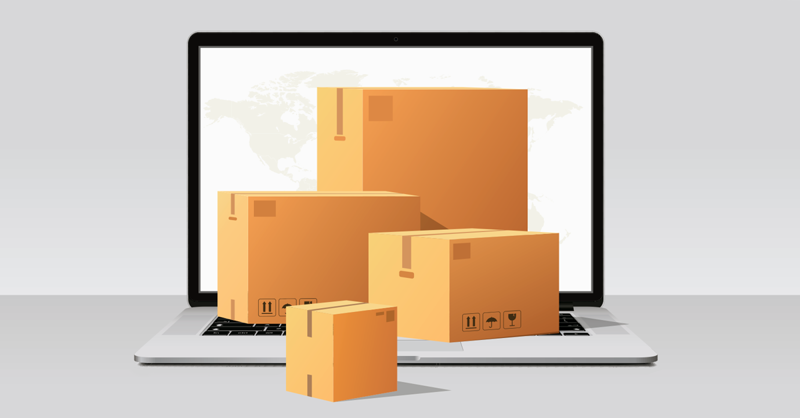As more employees are working from home than ever before, companies are facing new business continuity challenges, including managing shipping from remote locations efficiently, cost-effectively, and safely.
In the interview below, Pierbridge Managing Director Bob Malley leans on his 25+ years of shipping software development experience to shed light on what he is seeing in the current parcel shipping landscape.
What impact is the pandemic having on the parcel industry?
Well, it’s hard to know because the impact is playing out in real time. But I can tell you that we have seen more parcel shipments processed through our cloud-based parcel shipping platform this month than in any other preceding month. I understand from talking with counterparts at other TMS companies that they are seeing a similar increase in monthly LTL shipment volumes.
We can also see the carriers making service adjustments. They have implemented “no-contact shipping” practices. Most have suspended in-person signature requirements. They have relaxed guaranteed delivery commitments due to air freight flight cancellations. Additionally, eCommerce marketplaces aren’t sticking to normal two-day delivery commitments. As a result, you can see the trickle-down effect.
But it’s still early. The peak of the pandemic isn’t expected for another month or so. At that point we will be able to see the forest from the trees with more clarity.
How do you account for the rise in shipping volumes?
I believe that with so many people practicing social distancing, shipping—especially parcel shipping—as a method of communication will be more prevalent. People are more apt to shop online instead of going to the store and there are also families sending each other supplies as they practice social distancing. Workers at home offices are sending things to each other, as well as to partners and customers. With all of this change, businesses are going to have to adapt to the shift from central office to home office to maintain business continuity.
How are companies dealing with business continuity when it comes to shipping from home offices?
Most companies have geared up to support remote working processes as part of their business continuity planning. Employees are used to logging into enterprise systems and doing work outside of corporate office environments. But I think this pandemic has taken many businesses by surprise in terms of business continuity planning. It’s easy to envision short-term disruptions and implement temporary measures, but the current situation presents a situation where all aspects of the working environment need to be accounted for as employees work in isolation for extended periods of time.
Business continuity will require an alternative to centralized mail centers and shipping department to maintain shipping efficiency, cost controls, and employee safety. The need for an enterprise-class multi-carrier management system that can support thousands of employees working remotely is greater than ever. That’s why Pierbridge is offering a free one-year subscription to its Transtream enterprise ship from home office solution to help businesses and their employees navigate the current crisis.
What are the benefits of an enterprise ship from home office solution?
Well for one, most employees are not experts when it comes to transportation and logistics. They may waste valuable time trying to figure out the best carrier service to use and how to create a label. We understand carrier website support hold times are way up. Secondly, their decisions may not be cost-effective, especially if they rely on a carrier website. They may not take care to use the right cost center or GL code. Third, they may have to visit the local post office or ship center and wait for their package to be processed, which raises safety concerns. And lastly, management needs a centralized console to ensure security and corporate policies are followed and shipping costs are accurately accounted for.
How will omnichannel retail strategies be affected?
With stay-at-home orders in place, consumers will need to rely on home delivery of purchased goods. We can see that clearly as restaurants everywhere are pivoting to take-out and delivery services. Retailers who can adapt and leverage their real estate assets to incorporate ship from store capabilities will win. So omnichannel shipping will be more important than ever.
Do you think some of the “new” shipping that comes out of this may continue beyond the current situation?
I do. Home office working and residential delivery will become the new normal, with lasting effects well beyond the current crisis. It is an opportunity for every business to rethink how they can successfully operate in the new environment. Business continuity will depend upon it.
While it is still unclear how long it will be until things go back to business as usual, the new normal will require different management processes to keep packages, documents, and other materials flowing without any loss of productivity or cost control.
